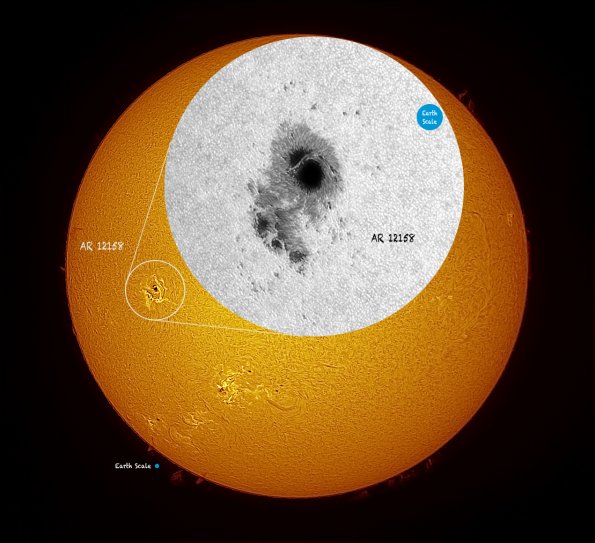Home | Gallery of astronomical pictures | SUN H-alpha (PST-40 mm) | SUN_08sept2014_morning-1
Photocomposition of the Sun observed in H-Alpha Light and White Light
Generally, the Sun can be observed on two layers: the Chromosphere and Photosphere.
The Photosphere is under the Chromosphere. The light of the Chromosphere is very weak and the light of the Photosphere is overwhelming.
The first layer, the Chromosphere, is visible through special filters that do pass only the red light of the hydrogen (H-Alpha).
The underlying layer, the photosphere, is easier to see by means of a filter less expensive.
In this picture, I have tried to show what happens under the layer of the Chromosphere at an active region.
For further explanations see also the pages that follow.
In this picture, the orangey color of the Chromosphere is not the red of the hydrogen, but a combination of false color assigned by the computer to improve the contrast. Is to be noted that the Chromosphere was taken in monochromatic light.
(Freely adapted from Wikipedia & Internet)
H-alpha (Hα) is a specific deep-red visible spectral line in the Balmer series created by hydrogen with a wavelength of 656.28 nm, which occurs when a hydrogen electron falls from its third to second lowest energy level. H-alpha light is important to astronomers as it is emitted by many emission nebulae, and can be used to observe features in the sun's atmosphere including solar prominences.
The Sun is white not yellow
It is a common misconception that the Sun is yellow, or orange or even red. However, the Sun is essentially all colors mixed together, which appear to our eyes as white. The reason the Sun looks yellow to us on Earth is that our atmosphere scatters light from the Sun; so the apparent color of the sun changes.
Not yet rated

